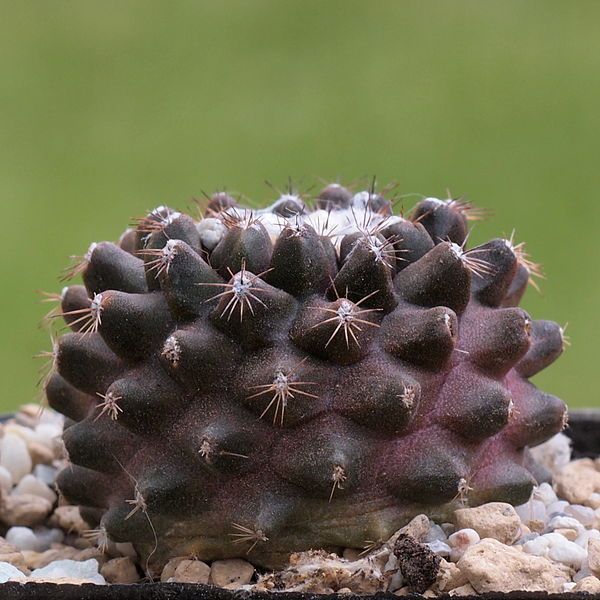Copiapoa Humilis Seeds
Copiapoa Humilis Seeds
Copiapoa Humilis is a small drought-tolerant cactus with yellow flowers, ideal for rock gardens or containers.

Delivery
All orders shipped with UPS Express.
Always free shipping for orders over US $250.
All orders are shipped with a UPS tracking number.
Returns
Items returned within 14 days of their original shipment date in same as new condition will be eligible for a full refund or store credit.
Refunds will be charged back to the original form of payment used for purchase.
Customer is responsible for shipping charges when making returns and shipping/handling fees of original purchase is non-refundable.
All sale items are final purchases.
Help
Give us a shout if you have any other questions and/or concerns.
Email: contact@domain.com
Phone: +1 (23) 456 789
Availability: In stock
SKU
Copiapoa Humilis
Copiapoa Humilis is a spherical cactus native to the coastal mountains of Northern Chile.
Copiapoa Humilis usually grows as solitary stems that are dull to dark green to almost black depending on their exposure to the sun.
Copiapoa Humilis? ribs are spiral shaped and their areolas are born about 12 thin radial spines yellowish and a central spine which can reach 1 cm in length. The cactus has 2.5 cm long yellow flowers that bloom in Spring and Summer. The flowers are supposedly to be sweet scented.
It requires full sun, a substrate with good drainage, moderate watering in spring and summer. Keep dry in winter and protect the plant from rain and frost in winter.
Hardiness zone: 10-12
| Label | Copiapoa Humilis |
|---|---|
| Common name | Copiapoa |
| Family | Cactaceae |
| Genus | Copiapoa |
| Species | Copiapoa humilis |
| Germination | Unless you have a heated greenhouse, it's best to sow cactus seed in the late spring. 1. Use a mixture of potting soil and sand. Firm down and make the surface level. Remember that cacti roots must have a well-draining porous soil which can easily be re-moistened. Some commercial potting soils have been developed specifically for cacti. 2. Scatter your mixed cactus seeds over the surface of the compost, taking care not to sow them too thickly. Sow them just enough sand to anchor them. 3. Gently sprinkle a thin layer of silver sand over the seeds, covering the whole surface of the compost. Dampen the soil enough to wet the seed. When the soil dries out completely, use a mister to keep it moist. Do not over water. 4. Leave the pot in a greenhouse or on a warm windowsill, covered with a sheet of glass and a layer of paper. Make sure to wipe away any condensation that may form. 5. Remove the glass once seedlings develop - these will be large enough to prick out by next spring. Place the seedlings in light, but not in direct sunlight. Keep temperatures around 70 degrees F (21 degrees C). 6. Next spring, gently tease out individual cacti, and plant out in a tray of gritty compost. Water well. 7. As they grow taller, carefully transplant some of the larger cacti into bigger pots to give them room. 8. Finally, plant individually into small terracotta pots. Water and feed, and repot annually as they grow. |
| Price View | Price Range |

